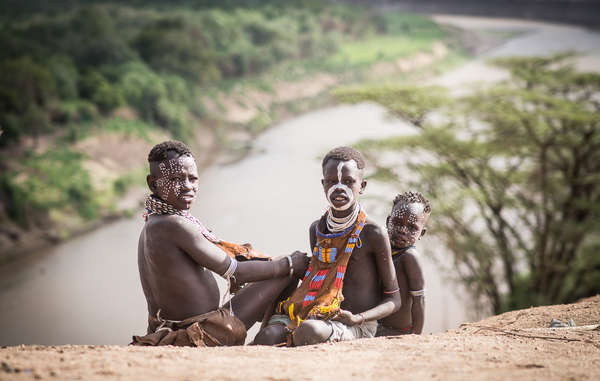Featured image: Lake Turkana and the River Omo, a lifeline to many tribal peoples, are drying up due to mega dam. © Nicola Bailey/ Survival International, 2015
UNESCO added Kenya’s Lake Turkana to its World Heritage Site Endangered List in June, a sign it believes the iconic lake’s survival is at risk.
Experts believe it is drying up largely because of the Gibe III dam, which lies upstream in Ethiopia and was completed in 2016.
For the eight different tribes of Ethiopia’s Omo valley region, the Gibe III dam and related sugar plantations project have already proved devastating. The dam has enabled local authorities to syphon off water from the Omo river to irrigate vast sugar plantations.
Forcibly evicted from their land, many of the country’s tribespeople have lost not only their homes but an entire way of life. The dam has ended the natural flood they depended on for flood retreat agriculture as well as depriving them of access to the river for fishing and for growing their crops.
Survival has received disturbing reports that tribal peoples are suffering from hunger and continue to suffer abuse and harassment if they speak out about the situation. Many communities are under pressure to relocate to government villages, a policy that most oppose.
The dam is also causing problems for the thousands of tribal peoples in northern Kenya who live around Lake Turkana and who fish its waters for their livelihood.
According to Ikal Ang’elei, director of the NGO Friends of Lake Turkana which has campaigned for years against the Gibe III dam: “The lives of local communities now hang in the balance given that their main sources of livelihood are facing extinction. This decision by the UNESCO World Heritage Committee should serve as a notice to Ethiopia to cancel any further dams planned on the Omo River.”
As early as 2010, one such expert predicted that the dam would reduce the lake’s inflow by some 50% and would cause the lake’s depth to drop to a mere 10 meters. “The result could be another Aral Sea disaster in the making,” he warned.
The World Heritage Centre Committee now recognises that the dam has led to “overall rapid decline in water levels” and has meant that seasonal fluctuations have been “heavily disrupted.” As a result, the Committee agrees that “the disruption of the natural flooding regime is likely to have a negative impact on the fish population in Lake Turkana, which may in turn affect the balance of the ecosystem, the livelihoods of the local fishing communities and the floodplains, which support herbivore species.”
UNESCO’s decision follows several years of lobbying by indigenous and international organizations.
The Omo Valley tribes did not give their free, prior and informed consent to the Gibe III dam project, a fact that Survival International highlighted in its submission to the African Commission on Human and Peoples’ Rights.
Despite the mounting evidence of the serious impacts of Gibe III on tribal peoples in Ethiopia and Kenya, the Ethiopian government is currently building another dam on the Omo river called Koysha, or Gibe 4.

